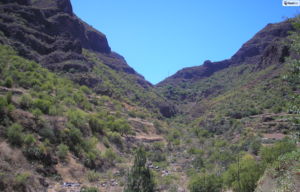A group of amateur archaeologists have unearthed the mummified remains of 72 skeletons on the island of Gran Canaria with the help of a drone.

Known informally as El Legado, the Spanish group set out to capture aerial footage of in the Valley of Guayadequeon nine months ago while on vacation.
The drone video revealed a cave containing 62 adult and 10 infant skeletons belonging to the pre-Hispanic Guanche civilization, believed to be the original inhabitants of the Canary Islands. Experts say hey settled there from North Africa.
“We were flying a drone and we took some pictures of the cave. It is in a very difficult place to access and you need to climb a cliff to reach the site,” El Legado member Ayose Himar Gonzalez told Archaeology World. “People thought the photos were fake because of all the bones there.”
The trio found the cave in June but held on to the information to avoid tipping off grave robbers or vandals. They informed a group of Spanish archeologists who later confirmed the site, dating the remains between the 8th and 10th centuries.
“There are many burial caves in Gran Canaria, but not many like this one,” Veronica Alberto of the Universidad de Las Palmas de Gran Canaria said in an interview.
“The Guanche people followed the same ritual process to prepare each of the 72 bodies found for burial, which included the use of burial shrouds traditionally made of animal skin or vegetable fibers. The discovery of the newborn remains is important as they were not included in previous findings until very recently. We know now they can be found in these types of cave burials.”
Experts also note that, due to the remoteness and inaccessibility of the cave, the remains may have never been found were it not for the drone. Researchers had to climb down 75 feet to reach the tomb. Gran Canaria is home to more than 1,200 archaeological sites.
“Drones are becoming ever more present tools for archaeologists looking to add to their survey and excavation toolkits,” anthropologist Alicia McDermott reported in a recent DroneLife article.
“They’ve been used to get some great aerial views of archaeological sites and features and sometimes even to discover them.”
Jason is a longstanding contributor to DroneLife with an avid interest in all things tech. He focuses on anti-drone technologies and the public safety sector; police, fire, and search and rescue.
Beginning his career as a journalist in 1996, Jason has since written and edited thousands of engaging news articles, blog posts, press releases and online content.
Email Jason
TWITTER:@JasonPReagan
Subscribe to DroneLife here.